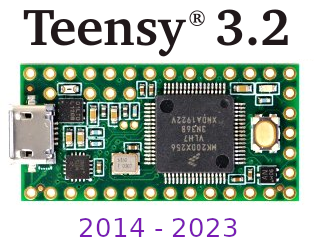With great sadness, we’re discontinuing Teensy 3.2.

Teensy 4.0 and 4.1 will continue. We’re able to get the new 600 MHz chips in sufficient quantity.
But the sad reality is we simply can’t get enough of the old 72 MHz chips. The ongoing problems with old chip supply has become a huge distraction which is impeding progress on Teensy 4.x development.
When the small stock we have remaining for Teensy 3.2 runs out, it will be discontinued.

Teensy 4.0 and 4.1 will continue. We’re able to get the new 600 MHz chips in sufficient quantity.
But the sad reality is we simply can’t get enough of the old 72 MHz chips. The ongoing problems with old chip supply has become a huge distraction which is impeding progress on Teensy 4.x development.
When the small stock we have remaining for Teensy 3.2 runs out, it will be discontinued.

